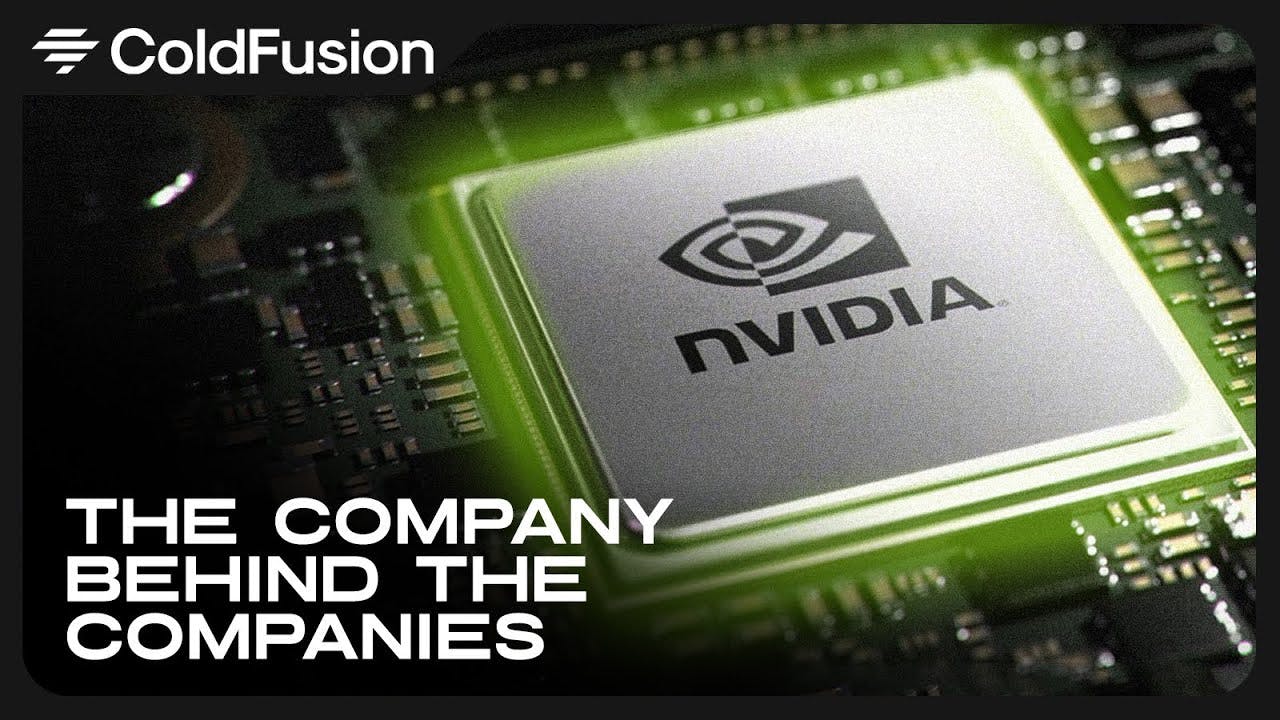How Nvidia Became a $1 Trillion Company
()

Introduction
- Nvidia is a California-based chipmaker that has seen a 220% increase in its share price, making it the highest-performing stock in the S&P 500 for 2023.
- Nvidia is known for powering companies like Netflix, Adobe, NASA, and Amazon web services (AWS).
- Nvidia's influence extends beyond gaming graphics cards to providing infrastructure for the digital age.
- The company is worth over $1 trillion and has had a remarkable turnaround since nearly going bankrupt in 1995.
The Formation of Nvidia
- In the early '90s, three engineers, Jensen Huang, Chris Malachowsky, and Curtis Priem, had the idea for a separate hardware processor known as a GPU (Graphics Processing Unit) that could handle parallel processing tasks more efficiently than CPUs.
- In 1993, Nvidia was founded with the focus on bringing parallel processing GPUs to the gaming market.
- The company faced initial challenges in securing funding, but with Jensen Huang's connection to LSI Logic, they secured $20 million in funding from Sequoia Capital and Sutter Hill Ventures.
- Nvidia's first product, the nv1 chip, was a failure due to its complex design and lack of compatibility with industry standards like DirectX.
- The company faced financial difficulties, but a generous act from Sega's CEO allowed Nvidia to pivot and survive.
Growth and Diversification
- Nvidia entered the PC graphics market in 1999 with the GeForce 256 graphics card, which was a huge success and transformed the gaming landscape.
- Nvidia went public in the same year and secured a major deal to develop graphics hardware for Microsoft's Xbox.
- The company continued to expand its reach by working with companies like Apple, Dell, and HP and playing a key role in crafting Sony's Playstation 3 processors.
- Nvidia's strategic decision to focus on being a fabulous chip company helped them keep costs down, and their partnership with Taiwan Semiconductor Manufacturing Company (TSMC) provided advanced manufacturing capabilities.
- The introduction of the CUDA software toolkit in 2006 made it easier to program GPUs and opened up new possibilities for various sectors, including AI and data processing.
- Nvidia's GPUs became the de facto standard for training and deploying AI models, and they played a crucial role in the AI boom of 2012.
- The company's stock value and revenue saw significant growth, and Nvidia reached a market cap of $1 trillion in 2023.
Controversies and Challenges
- Nvidia faced controversies related to the pricing of their GPUs during the crypto mining boom, which affected gamers who experienced price increases.
- The company was charged by the US Securities and Exchange Commission for unlawfully shrouding information, resulting in a $5.5 million penalty settlement.
- Jensen Huang's leadership style and profit-driven approach have attracted criticism, and controversies with partners like EVGA have raised questions about his business ethics.
Current Outlook and Challenges
- The current outlook for Nvidia is divided, with some believing that the AI industry will continue to grow, and Nvidia will benefit from it.
- However, there are challenges, such as increased competition from companies like Microsoft and AMD, as well as potential supply chain disruptions due to geopolitical tensions.
- The future success of Nvidia remains uncertain, and opinions vary on whether their current growth is sustainable or a bubble.
Conclusion
- Nvidia has gone through significant growth and transformation, from focusing on gaming graphics cards to becoming a major player in AI and data processing.
- The company's journey has been marked by successes, failures, controversies, and challenges.
- Whether Nvidia can sustain its current success and navigate future challenges remains to be seen.